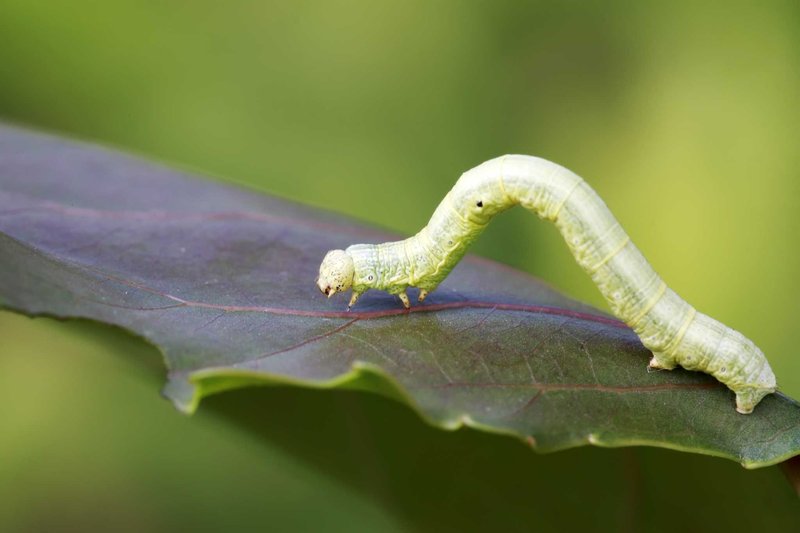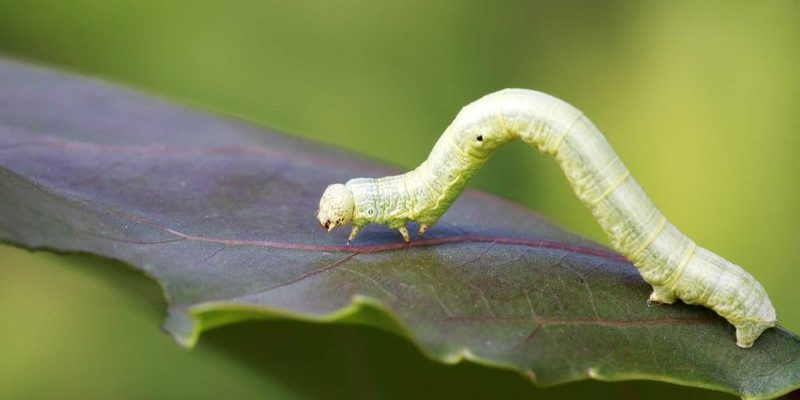
When you think about territorial behavior, you might picture larger animals, like wolves claiming their hunting ground or birds defending their nests. But inchworms? They’re small and seemingly harmless. So, you might be wondering: Do they really care about a particular part of the garden, or is it all just one big buffet for them? Let’s dive into the world of inchworms and uncover whether they exhibit any signs of territoriality.
Understanding Inchworm Behavior
Inchworms belong to the moth family and are the larval stage of certain species. Known scientifically as “loopers” because of their unique way of moving, inchworms create a loop with their bodies as they crawl. This fascinating movement is their signature style, but it also serves a purpose beyond just looking cute. They use this movement to navigate through their environment while keeping a low profile from predators.
One of the most interesting aspects of inchworms is how they interact with their environment. In their early stages, they’re mostly focused on survival—finding food and avoiding predators. But here’s the thing: territorial behavior isn’t always about marking a space; it can also involve competition for resources. This is where inchworms might show some instincts of competition, especially during feeding.
While inchworms don’t build nests or defend a specific territory like some larger animals do, they might display behaviors that suggest they have preferences for certain areas. For instance, they tend to congregate in places where food sources are abundant. This can give the appearance of territoriality, even if they aren’t actively defending a space.
Do Inchworms Compete for Resources?
In the world of inchworms, competition for food is a more likely scenario than territorial disputes. These creatures munch on various leaves, devouring them as they grow. Given that food sources can be limited, it’s natural for them to seek the best spots to feed.
When you have multiple inchworms in close proximity, you might notice them wriggling around as they fight for the same leaves. This behavior is less about claiming territory and more about ensuring they have enough to eat. They’ll often explore various plants, leaving some leaves bare while others remain untouched. It’s a bit like a buffet; some inchworms might get there first, but that doesn’t mean they own the salad bar.
Interestingly, the competition can lead to different outcomes. For example, if food is plentiful, inchworms might coexist peacefully. But in leaner times, you might see more aggressive behaviors as they scramble to grab what they can. This helps us understand that while inchworms may not be territorial in the traditional sense, they are certainly competitive.
The Influence of Environment on Inchworm Behavior
The environment plays a significant role in inchworm behavior, including how they interact with one another. Factors like weather, food availability, and plant health can influence their movements and feeding patterns. For example, inchworms tend to be more active during warm days, which means they’ll be on the hunt for food.
In environments where there’s a high density of inchworms, the competition can indeed seem intense. On the other hand, in an area with plentiful food, inchworms might spread out, leading to less visible competition. This variability can affect how you perceive their behaviors. It’s like watching a busy restaurant: some nights it’s lively and chaotic, while others it’s quiet and relaxed.
In addition, their **camouflage** plays a role as well. The green coloration of many inchworm species helps them blend in with leaves, which not only helps them protect themselves from predators but also allows them to feed with less disturbance. By staying hidden, they can focus on feeding rather than defending a territory.
Comparing Inchworms to Other Larvae: Who’s More Territorial?
When looking at inchworms, it’s interesting to compare their behavior to other larvae types, like caterpillars. Some caterpillar species show definite territorial behavior, often defending their host plants fiercely. They will mark their territory using pheromones or even aggressive displays to ward off competitors.
In contrast, inchworms don’t typically display these behaviors. They’re more focused on feeding and growing rather than defending a particular area. This doesn’t mean they lack social interactions altogether; they still respond to the presence of other inchworms, especially when they’re competing for food.
If you look at other animals, distinctions between territorial and non-territorial behaviors become clearer. Some insects will engage in battles to claim a food source, while inchworms will usually just move to another leaf if they encounter competition. This adaptability is essential for their survival, making them a bit more laid-back compared to their more aggressive cousins.
How Inchworms Adapt to Their Surroundings
Adaptability is a key theme in the life of inchworms. They have incredible abilities to blend into their surroundings, which serves multiple purposes. By mimicking the leaves and branches they inhabit, inchworms avoid predators and can remain unnoticed while munching away at their food sources.
Moreover, the ability to move stealthily is crucial when inchworms are faced with competition. If they sense another inchworm nearby, rather than engage, they might simply inch away to a new spot. This subtle behavior shows resilience in adapting to their environment, indicating a survival mode that prioritizes staying alive rather than claiming territory.
This behavior extends beyond feeding into their lifecycle. Inchworms are often preyed upon by birds and other predators, so their ability to stay hidden helps them survive. When competition arises, the not-so-aggressive nature of their habits comes in handy. You could say it’s a survival strategy, one that allows them to thrive without the need for territorial disputes.
In conclusion, while inchworms may exhibit behaviors that hint at competition over resources, they don’t display true territorial behavior as seen in other animals. These little creatures are more focused on survival than defending a spot in the garden. Their unique adaptations, like camouflage and flexibility in feeding, allow them to thrive even in varying conditions.
So, the next time you spot an inchworm on a branch, remember that it might be competing for that perfect leaf rather than claiming the whole tree as its territory. Understanding their behavior not only sheds light on their survival but also emphasizes the beauty of nature’s delicately balanced ecosystem. They may be tiny, but the role they play is anything but insignificant!

